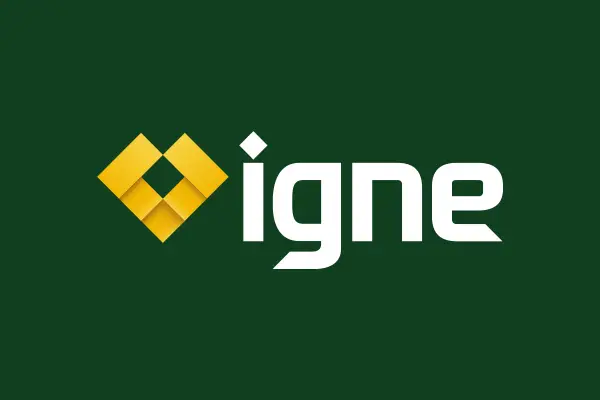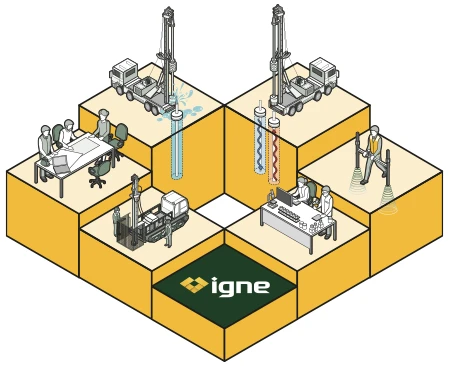

3D Settlement Monitoring Surveys
Remote monitoring has revolutionised how construction, infrastructure, and development projects are managed, particularly in terms of safety, efficiency, and risk mitigation.
About
What is Remote Monitoring in Monitoring Surveys?
As part of Igne’s comprehensive monitoring survey services, remote monitoring offers real-time data collection and analysis without the need for constant on-site presence.
By harnessing cutting-edge technology, remote monitoring allows project teams to track movements, deformations, and environmental conditions continuously, ensuring that any issues are detected and addressed promptly.
Remote monitoring in the context of monitoring surveys involves the use of sensors and automated systems to collect real-time data from a site or structure. This data can include a range of metrics, such as ground settlement, structural movements, environmental conditions, and more.
The key feature of remote monitoring is that it allows for continuous tracking without the need for manual site visits, as data is transmitted remotely to project teams.
Igne uses state-of-the-art remote monitoring systems that provide precise, timely information, allowing engineers and project managers to make informed decisions quickly.
Whether for large-scale infrastructure projects or sensitive ground conditions, remote monitoring ensures that critical data is always accessible.

Useage
Why Carry Out Remote Monitoring?
It is essential for projects where continuous tracking of ground conditions or structural integrity is required.
Here are some key reasons why remote monitoring should be part of your site investigation or construction project:
Continuous Data Collection
Remote monitoring ensures that data is collected 24/7, which is crucial for detecting changes that could occur outside of normal working hours. This is particularly important in areas with unstable ground conditions or for structures that are at risk of settlement or deformation.
Real-Time Alerts
One of the major advantages of remote monitoring is the ability to receive real-time alerts when changes are detected. This allows project teams to react quickly, minimising the risk of damage or delays.
Reduced Need for On-Site Personnel
Remote monitoring eliminates the need for constant on-site inspections, saving time and reducing costs. It also reduces the risks associated with sending personnel into hazardous environments, such as unstable ground or confined spaces.
Regulatory Compliance
Many projects are required to monitor environmental or structural conditions as part of planning permissions or regulatory compliance. Remote monitoring provides accurate, up-to-date data that can be used to demonstrate compliance with building codes and environmental regulations.
Trust
Why Trust Igne for Remote Monitoring Surveys?
When it comes to remote monitoring surveys, we are already a trusted leader in providing accurate, reliable data that helps de-risk projects. Here’s why you should also choose us for your remote monitoring needs:
Technical Expertise
We have extensive experience in conducting monitoring surveys across various sectors, including residential, commercial, and industrial projects. Our team of experts has the knowledge and skill required to design and implement effective remote monitoring systems tailored to your project’s specific needs.
Advanced Technology
We use the latest in remote monitoring technology, including wireless sensors and cloud-based data systems, to provide real-time tracking and reporting. This ensures that you have immediate access to the information you need to make informed decisions.
Customised Solutions
Every project is different, and we understand that a one-size-fits-all approach doesn’t work. Igne offers customised remote monitoring solutions that are designed to address the specific risks and requirements of your project, ensuring you get the most relevant and actionable data.
Proven Track Record
Our proven track record of successful monitoring surveys speaks for itself. We have worked on a wide range of projects, from small developments to large infrastructure builds, and our clients trust us to deliver accurate, timely data that helps keep their projects on track.
Risks
The Risks of Not Doing Remote Monitoring
Choosing not to carry out remote monitoring on your project could expose you to risks including:
Undetected Changes
Without continuous monitoring, ground movement, structural deformation, or environmental changes could go unnoticed until they cause significant damage. By the time these issues are detected through traditional inspection methods, it may be too late to prevent costly repairs or delays.
Increased Project Delays
Project teams that rely solely on periodic inspections may miss critical changes that occur between site visits. This can lead to unexpected project delays, as problems are only discovered once they’ve escalated.
Safety Concerns
Without remote monitoring, there is a greater reliance on on-site personnel to carry out manual inspections, which can expose workers to potentially hazardous environments. Remote monitoring provides a safer alternative by minimising the need for human intervention in dangerous areas.
Non-Compliance
Many regulatory bodies require continuous monitoring for certain types of projects. Failing to implement remote monitoring could result in non-compliance with building codes or environmental standards, leading to fines, delays, or legal action.
Benefits
The Benefits of Remote Monitoring
Remote monitoring offers a wide range of benefits that can enhance the efficiency, safety, and success of your project:
24/7 Data Collection
Remote monitoring ensures that critical data is being collected around the clock, providing a comprehensive view of site conditions without any gaps in coverage.
Real-Time Alerts
If any significant changes are detected, remote monitoring systems can send real-time alerts to project teams. This allows for rapid responses, minimising the risk of damage or disruption to the project.
Cost Savings
By reducing the need for manual site inspections, remote monitoring can lead to significant cost savings over the course of a project. It also helps avoid costly repairs by identifying potential issues early.
Improved Safety
Remote monitoring reduces the need for personnel to enter hazardous areas, helping to improve overall site safety. This is especially beneficial for projects in challenging environments, such as unstable ground or high-risk infrastructure.
Enhanced Project Control
With continuous data at your fingertips, remote monitoring provides better control over the project. Project managers can make informed decisions based on real-time data, ensuring that work progresses smoothly and efficiently.
Process
How Remote Monitoring is Done
At Igne, remote monitoring is carried out using state-of-the-art technology and equipment to provide accurate, real-time data. Here’s a breakdown of how the process works:
- Initial Consultation
We start by discussing the specific needs of your project, identifying the key risks that require monitoring and the data that will be most useful to your team. - System Design
Based on the project’s requirements, we design a customised remote monitoring system. This includes selecting the appropriate sensors, data collection methods, and reporting systems to ensure comprehensive coverage. - Installation
Our team installs the remote monitoring equipment on-site. This may include placing sensors to monitor ground movement, structural deformation, or environmental conditions. The equipment is set up to transmit data in real-time to our cloud-based system. - Data Collection & Reporting
Once the system is operational, data is collected continuously and transmitted remotely. we provide regular reports and real-time alerts, allowing you to track site conditions and respond to any changes as needed. - Ongoing Support
Throughout the project, we provide ongoing support to ensure the monitoring system continues to operate effectively. We can adjust the system as needed, based on the data being collected.
Learn More
Frequently Asked Questions about Remote Monitoring Surveys
- What is remote monitoring in construction?
In construction it involves using sensors and automated systems to collect data on ground conditions, structural movements, or environmental factors in real-time, without the need for manual site inspections.
- Why is remote monitoring important?
It is crucial for detecting early signs of movement, deformation, or environmental changes, allowing project teams to react quickly and prevent costly damage or delays.
- What types of projects require remote monitoring?
Remote monitoring is particularly important for projects involving unstable ground conditions, large infrastructure builds, or areas prone to environmental risks. It is also essential for projects where continuous regulatory compliance is required.
- How does remote monitoring work?
It works by using sensors installed on-site to collect real-time data. This data is then transmitted to a central system where it can be accessed remotely by project teams.
- What are the benefits of remote monitoring?
Benefits include continuous data collection, real-time alerts, reduced need for manual inspections, improved safety, and cost savings over the course of the project.
The Next Step
At Igne, we specialise in providing customised remote monitoring solutions that help you stay in control of your project, from start to finish.
Whether you need to track ground movement, structural integrity, or environmental conditions, our expert team is here to help.
Contact us today to learn more about our remote monitoring services and explore how we can support your project’s success through real-time data collection and advanced monitoring solutions.
